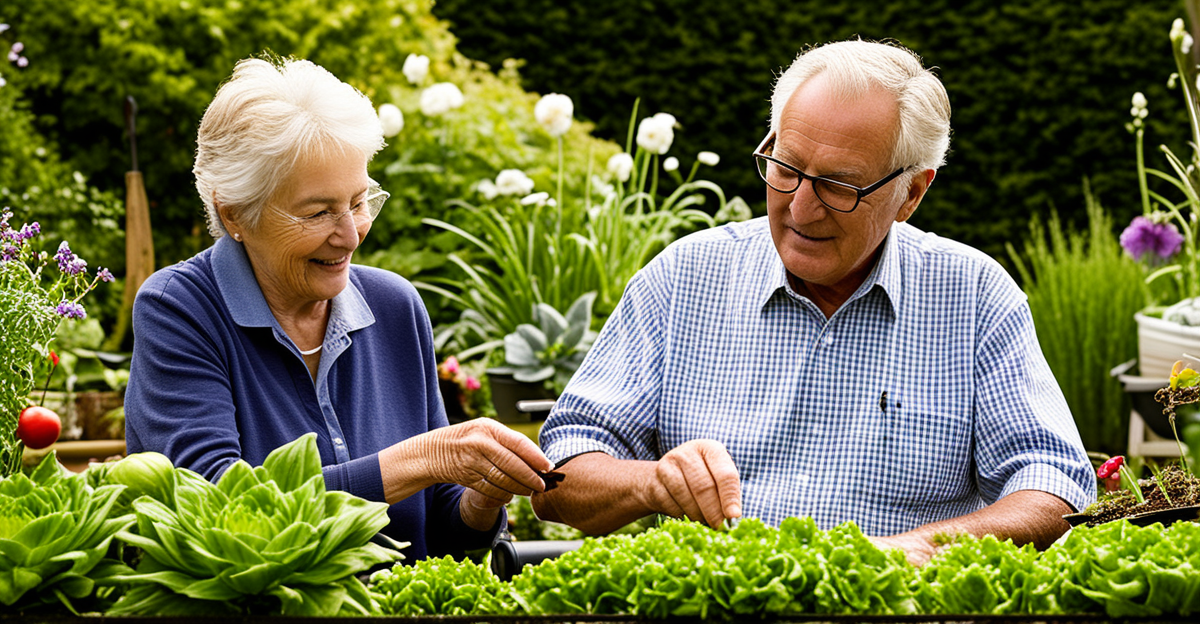Prioritising Garden Accessibility for Visually Impaired Seniors
Designing gardens for visually impaired seniors involves tackling several challenges, such as limited depth perception and difficulty navigating uneven terrain. Addressing these obstacles is key to creating a safe and enjoyable outdoor space.
A strategic approach includes implementing adaptive garden layouts. Raised beds bring plants closer, reducing the need for bending and making it easier to identify plants by touch. Wide pathways ensure mobility, especially for those using canes or walkers, while tactile navigation markers—such as textured paving stones or handrails—help users orient themselves independently.
In parallel : Connecting communities: the ultimate guide to telemedicine access for rural seniors for improved healthcare
Real-life transformations showcase the benefits: seniors report increased confidence and more frequent engagement with their gardens after modifications. For instance, a garden incorporating raised beds and clear tactile cues enabled an older adult with low vision to tend plants independently, enhancing both physical activity and wellbeing.
In summary, accessible gardening for visually impaired seniors thrives on thoughtful design that respects sensory limitations and prioritises ease of movement. Adaptive garden layouts with raised beds, broad walkways, and tactile guides create inviting, functional outdoor spaces where seniors can flourish.
In the same genre : Hydration strategies for seniors: beat the heatwave with cool tips
Adaptive Gardening Tools and Equipment
Choosing the right adaptive gardening tools can significantly enhance the gardening experience for visually impaired seniors. Tools featuring large grips reduce hand strain and improve control, an essential aspect of ergonomic gardening. High-contrast colours help users distinguish tools easily, addressing common visibility challenges faced by seniors with low vision.
For example, ergonomic trowels and pruners with rubberized, oversized handles allow for a secure grip without requiring excessive force. Some tools also include audio feedback, alerting users when a task is complete or if pressure is applied improperly. These features provide reassurance and enable safer use, contributing to independence.
Many companies offer accessible toolkits designed specifically with gardening aids for low vision. These kits often combine functionality with thoughtful design, incorporating tactile markings for orientation. Practical modifications can also be made to existing garden tools—adding bright tape for visibility or applying textured grips to enhance handling.
In summary, selecting and customizing tools tailored to the needs of visually impaired seniors supports safer, more comfortable gardening. The thoughtful integration of adaptable features empowers seniors to maintain their passion for gardening with confidence and autonomy.
Enriching the Garden with Sensory Plant Choices
Selecting the right plants is crucial for sensory gardening tailored to blind gardeners. Fragrant plants, such as lavender or lemon balm, appeal to smell, while tactile plants like lamb’s ear offer soft, textured leaves for touch exploration. Incorporating plants that provide auditory stimulation, like rustling grasses or plants that attract birds, further enhances sensory engagement.
Creating distinct garden zones helps organise sensory experiences. For example, a fragrant herb section contrasts with a textured foliage area. This division aids orientation and encourages exploration, promoting confidence in movement. Combining plants with varied heights and growth habits ensures safety by avoiding dense, hard-to-navigate areas. Low-growing ground covers paired with taller, well-spaced shrubs create an accessible layout.
Sensory gardening for visually impaired seniors encourages connection to nature beyond sight. It fosters mental wellbeing and provides a safe, inviting environment. Strategic plant selection makes the garden a dynamic space where visually impaired seniors can rely on their senses to navigate and enjoy gardening with independence and delight.
Ensuring Safety and Comfort in the Garden
Creating a safe environment is essential for visually impaired seniors to enjoy accessible gardening with confidence. Garden safety begins by minimising tripping hazards, such as uneven surfaces, loose stones, and exposed roots. Regularly clearing pathways and installing wide, level walkways with non-slip textures support secure footing. These simple but effective measures address common stumbling risks.
Water features and gardening tools require careful attention. Position fountains or birdbaths away from main paths to prevent accidents. Tools should be stored in clearly marked, reachable locations, using gardening aids for low vision—like tactile labels or bright colours—to ensure easy identification and reduce injury risk.
Comfort is equally important. Providing shaded seating areas with easy access allows seniors to rest and avoid fatigue. Benches with armrests aid standing and sitting, supporting safe gardening practices for seniors throughout outdoor activities. Well-placed water stations encourage hydration without disrupting movement.
Together, these practical modifications foster a safe, welcoming garden space that promotes independence and wellbeing for visually impaired seniors, ensuring their outdoor experience is both enjoyable and secure.
Innovative Strategies and Technology for Independence
Innovative assistive technology for gardening is transforming outdoor spaces for visually impaired seniors, promoting greater independence. Smartphone apps equipped with audio guides provide step-by-step instructions, helping users identify plants and manage garden tasks confidently. These apps often include voice commands and alerts, addressing visibility challenges with ease.
Smart garden devices, such as automated watering systems with timers and moisture sensors, reduce manual effort while ensuring plants receive optimal care. These technologies provide consistent irrigation without requiring visual monitoring, which is vital for maintaining a healthy garden. Additionally, tactile plant labelling using raised symbols or Braille improves orientation and identification, supporting self-reliance.
Community programmes also play a key role in fostering gardening independence for the visually impaired. Group workshops incorporate technology training and shared resources, enabling seniors to learn and adapt together. Communication systems tailored for gardeners with low vision, like audio alerts for reminders or notifications, further enhance autonomy.
By blending practical technology and social support, these strategies deliver accessible gardening solutions that empower visually impaired seniors to engage fully with their gardens. Embracing assistive technology and smart devices transforms gardening from a challenging task into an enjoyable and manageable activity.











